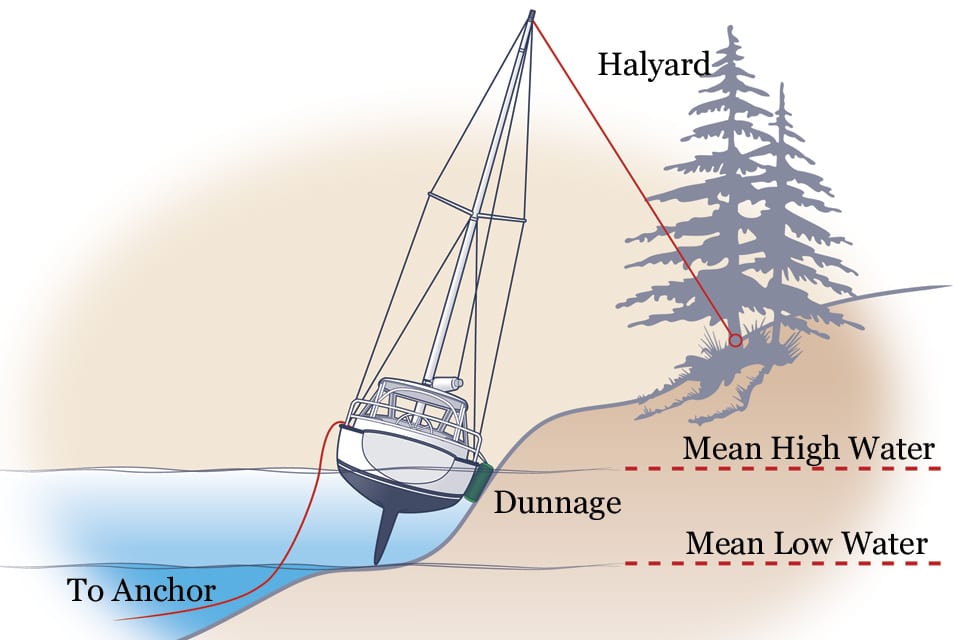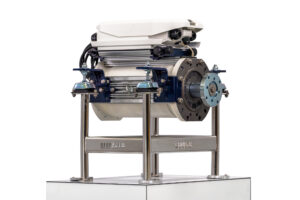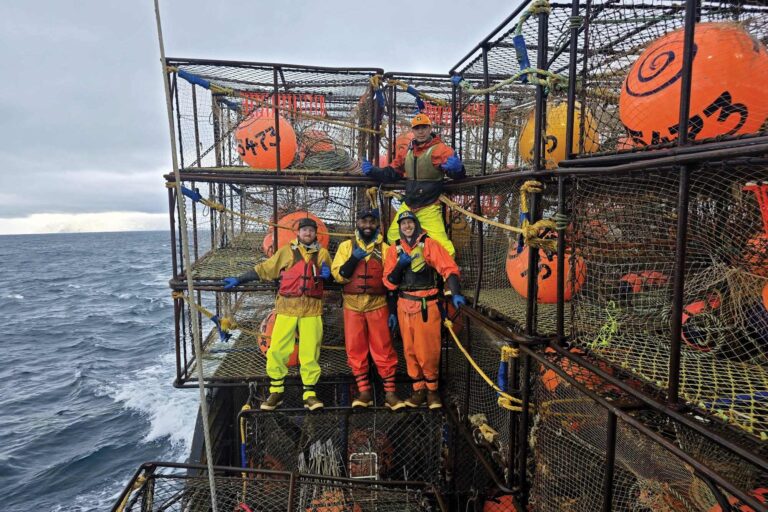
aground1.jpg
There’s an old saying about cruising: If you haven’t been aground, you haven’t been around. Yes, running aground is every sailor’s nightmare, one that many of us have experienced. But it’s also true that it goes with the territory. If you’re going to wander off the beaten path, sooner or later you’re going to touch bottom.
Hopefully, it’ll happen on a sandbar in quiet conditions and you’ll gently back off. Running onto a ledge under full sail with the tide falling is the sort of life-threatening situation we all want to avoid.
Either way, if or when your grounding does occur, having proper equipment readily at hand is extremely important. Quality, watertight flashlights to inspect bilges or peer under the boat are a necessity; have a few on board and check them periodically. Your “grounding kit” should include miscellaneous patching supplies such as underwater seam compound and small tarps. A substantial anchor with plenty of rode that’s readily available to set astern can be a lifesaver. A long, proper boat hook is an important tool to determine the underwater terrain around a grounded boat, as well as the points of contact with the bottom (see “How to Make a Handy Hook“). A handheld portable depth finder can also be very useful. Although most chart plotters have the tide charts built in, you should also have a regular tide table as a backup.
The configuration or shape of your hull will be a determining factor when evaluating the situation and deciding what to do next. Do you have a good mental picture of the underwater profile of your boat, such as where the keel begins and ends, as well as the rudder configuration? Even if you do, a side-profile drawing of the boat is worth keeping aboard.
Traditional full-keel sailboats, with their attached rudders, are less apt to suffer damage than modern fin-keel designs with spade rudders. Full-keel boats will usually remain on a level fore and aft attitude (depending on the bottom), and will lie on their side as the tide lowers. In contrast, the relatively small surface area on the bottom of a fin keel can rapidly settle into mud or sand, or get wedged in rock. As the tide goes out, the boat can pivot forward onto the bow or aft onto the spade rudder, which is not designed to withstand the load imposed in this manner. If the boat then turns onto her side, it can be catastrophic.

| |Figure 2: Reduce Draft by Heeling To heel the sailboat after a grounding in order to try motoring off, attach the topping lift to the boom and then use the boom to lift the dinghy and outboard out of the water as you move as much gear as possible to the lower side of the boat. To do this, you will need to rig a bridle for the dinghy using bow and stern lines. A halyard led to an anchor and then winched tight can also help tip the boat. A third alternative is to have agile crew crawl to the end of the boom.|
Having run aground, the first priority is to check for leaks. In a soft grounding in mud or sand, this is generally not an issue. However, in a hard grounding, on a rocky ledge or a coral reef, the initial impact and subsequent pounding can dislodge the keel, open seams or even fracture the hull. If you’re taking on water, quickly locate the source. Are the pumps able to keep up? If the situation warrants, the engine’s raw-water cooling system can be used as an additional pump by closing the raw water intake seacock, then removing the intake hose from the seacock and arranging it to feed from the bilge. Monitor the engine temperature in case it has a blockage or begins to run dry. If you have additional crew, a motivated person with a bucket can move a lot of water.
When you have located the breach, decide if it can be patched or if it’s time to make plans to call for help or abandon ship. If the breach is a hole or crack in an area that’s accessible, the flow can often be slowed or stopped using underwater seam compound. We’ve found that Davis Slick Seam works extremely well in these situations. Smear the compound over the breach. If the breach is too large, coat a patch with the compound and stick it on from the outside. Water pressure will help hold it in place. Larger holes will require inside shoring to prevent the patch from being pushed in. Hopefully, the temporary patch will allow time to float the boat. If so, determine whether the boat is seaworthy enough to make way to a haul-out facility, or if a suitable location can be reached to intentionally beach the boat to effect better repairs.
At some point, the local marine authorities should be notified of your situation. They will want to know your location, number of crew, vessel description and so forth. They may wish to establish periodic communications until the situation is resolved. While they can’t offer assistance in getting you afloat, they may become involved if the trouble escalates. You might also consider soliciting help from a professional towing service. If you do, salvage laws may come into play (see “Are You Being Towed or Salvaged?” in the November 2013 issue).
If the boat is in no immediate danger of filling with water, the next step is to keep it from being pivoted sideways to wave action or washed farther ashore. First, drop the sails. Then set an anchor with plenty of scope, and take up the slack (Figure 1).
Here’s a neat trick for setting an anchor with a dinghy. If using an outboard-equipped inflatable, and conditions allow — you wouldn’t want to reverse into any kind of seaway — first lower the anchor over the side of the vessel, then pass the dinghy’s bow line through the anchor shackle, over the dinghy’s bow and back to the operator or crew. Next, have a crew on deck lower the anchor several feet into the water, so it hangs below the dinghy’s bow. While the on-deck crew pays out the anchor rode, back the dinghy away from the grounded vessel. This provides good steerage and will prevent the rode from catching in the propeller. To set the anchor, just release the bowline. This method keeps the center of gravity low and avoids damaging the dinghy. If using a rowing skiff for this maneuver, take the anchor under its stern with a line and secure the line to a center thwart.

| |****__**Figure 3: Pivoting the Boat to Safety** With a stern anchor firmly set and the engine in reverse, use your outboard-powered dinghy to rock the sailboat’s bow back and forth. Make sure a crewman takes up the slack on the rode so it doesn’t foul the prop.|
Check the depths around the boat using the boat hook or handheld depth finder to determine the path of least resistance to freedom. If the tide is incoming, it’s often best to patiently let the boat rise on its own; use the anchor to ease its ascent and avoid more damage to the keel and rudder. You can also try putting the engine in reverse, gently at first, before gradually increasing power. The momentum may help lift the boat free, especially if wave action is contributing. Rocking the boat with the engine in reverse can also be successful.
The key to getting a boat unstuck is reducing the draft. The maximum draft on many full-keeled boats is located at the aft section of the keel. Moving weight forward (crewmembers, spare fuel jugs, spare anchors and so on) will allow the aft section to pivot up and reduce draft, and also provide a better angle on the bottom of the keel to increase the odds of sliding off.
Another way to reduce draft is by heeling the boat. There are several ways to accomplish this: Shift the crew weight to one side; swing the boom, weighed down, out over the water (athletic crew can add the weight, or you can employ the dinghy by lifting it with the topping lift); or attach a halyard to an anchor rode, set the hook a good distance abeam, then winch it home (Figure 2).
In certain situations, you can even use the sails, either properly set or back-winded, to break loose. Once the boat is sufficiently heeled, try backing down with the engine or kedging off from astern. When using the engine to reverse when aground on sand (especially that from volcanic rock) or coral sediment, the propeller wash will stir up a cloud of this fine abrasive that can be sucked into the engine’s raw-water cooling circuit. Although the sea strainer may trap some of the stuff, most of it will travel into and through the pump, where it can damage the impeller, score the pump’s shaft and cause the seals to leak. After running the engine in these conditions, carefully check the pump.
Towing the boat free with the dinghy can also work (Figure 3). Or sometimes using the dinghy and just rocking the boat or pivoting it will slide it off. Whichever tactic you try, if the boat is attached to an anchor with a halyard, make sure someone is stationed at that halyard to cast it off immediately if you break free. The last thing you want to do is damage the rig.

| |Figure 4: The Danger of Downflooding If a sailboat is allowed to tip toward deeper water and waves as the tide recedes, chances are the incoming tide will cause downflooding that prevents the vessel from righting. The deck will also be exposed to damage from waves.|
If all efforts to float the boat fail, and it’s clear it is firmly aground and will not break free with a rising tide, more aggressive action is called for. If the tide will fall to a level that leaves the boat heeled over on its side, carefully survey the bottom with the boat hook to ensure that no outcroppings will damage the hull. If you discover rocks or reefs, dunnage must be set in place for the bilge to rest upon. When it comes to protecting the hull, fender boards, life jackets, settee cushions and mattresses are all expendable. Sail bags filled with these items work well to cushion the boat. As the tide drops, make sure the boat isn’t balancing in an upright but precarious position; once the tide’s out, it could suddenly fall over, inflicting considerable damage and possibly injuring the crew. If aground with a steep drop-off to one side, ensure that the boat is positioned away from deep water. If, when the tide falls, the keel is left higher than the deck, the next incoming tide will down-fill the boat (Figure 4).
With careful navigation, you may never find yourself in a position where the draft of your boat is greater than the depth of the water. That’s the goal, obviously. If you’re an adventurous sailor, however, kissing the bottom from time to time may be unavoidable. With a little forethought and quick action, it won’t ruin your day, or your vessel.
Capt. Earl MacKenzie holds a U.S. Coast Guard 500-ton ocean master license and skippers the charter schooner Bonnie Lynn (www.bonnielynn.com). This article first appeared in the November 2013 issue of Cruising World as “Going to Ground.”








